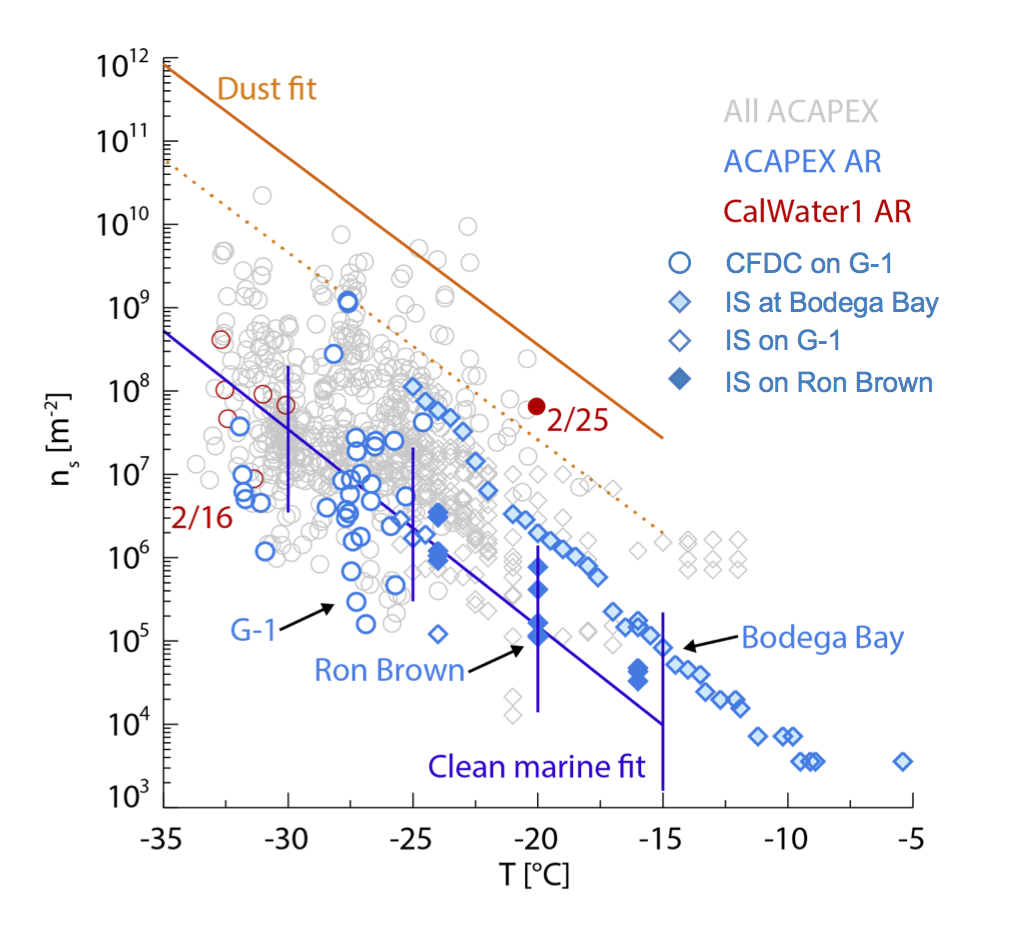Characteristics of ice nucleating particles in and around California winter storms
Submitter:
DeMott, Paul J. — Colorado State University
Kreidenweis, Sonia — Colorado State University
Area of research:
Cloud-Aerosol-Precipitation Interactions
Journal Reference:
Science
Using a suite of ground-, ship- and aircraft-based measurements collected in DOE campaigns, this study characterized the spatiotemporal abundance and composition of ice nucleating particles (INPs), the vital seeds for ice crystal and precipitation formation in winter storms in California. Ocean-sourced INPs were diagnosed to dominate periods of study, with more episodic influence from mineral dust INPs. These two types of INPs, and possibly additional episodic emissions of biological INPs following precipitation, appear as the most important types to parameterize for predicting aerosol influences on primary ice crystal initiation and winter precipitation using numerical models.
Impact
These studies provide a quantitative basis for improving representation of ice nucleation in regional-scale and climate-model simulations. Results support the need for aerosol-aware numerical schemes for simulating West Coast U.S. winter storms. Whereas treatment of marine and dust aerosols is necessary, regional urban pollution does not appear to be an important source of seeds for ice nucleation.
Summary
Winter storms along the U.S. West Coast provide a major proportion of the annual precipitation. Previous studies have shown that mineral dust INPs from elevated layers can seed ice crystal and precipitation formation within a landfalling atmospheric river (AR). This study tested the hypothesis that intercontinentally transported dust layers are an essential component for effective winter orographic precipitation over the Sierra Nevada Mountains. A comprehensive suite of aerosol and cloud measurements were made during the ARM Cloud Aerosol Precipitation Experiment (ACAPEX) in 2015, including INP measurements (continuous flow diffusion chamber – CFDC; filters collected for immersion freezing analysis - IS) on the ARM Aerial Facility Gulfstream-1 aircraft, offshore on the National Oceanic and Atmospheric Administration research vessel Ronald H. Brown, and at a coastal site. INP number concentrations (nINP), and nINP normalized by aerosol surface area (ns), were derived, and the relative contribution of INP types was evaluated by comparison to existing ns parameterizations for dust and primary marine aerosols. More data clustered in the region of ns space that characterizes clean marine INPs than they did with more highly active dust INPs. Aerosol compositions measured with a single-particle aerosol mass spectrometer confirmed that dust was present only at trace levels through most of the study, consistent with minor contributions from these more active INP types. Dominance of marine INPs, aligning with dominance of sea spray-related aerosol mass spectral clusters, was especially found during major landfalling AR event. Increases in biological INPs were inferred following precipitation events.


